calsfoundation@cals.org
Rondo (Lee County)
| Latitude and Longitude: | 34°39’33″N 090°49’14″W |
| Elevation: | 213 feet |
| Area: | 1.01 square miles (2020 Census) |
| Population: | 163 (2020 Census) |
| Incorporation Date: | June 19, 1918 |
Historical Population as per the U.S. Census:
| 1810 | 1820 | 1830 | 1840 | 1850 | 1860 | 1870 | 1880 | 1890 | 1900 |
| – | – | – | – | – | – | – | – | – | – |
| 1910 | 1920 | 1930 | 1940 | 1950 | 1960 | 1970 | 1980 | 1990 | 2000 |
| – | – | 274 | 201 | 194 | 219 | 379 | 330 | 283 | 237 |
| 2010 | 2020 | ||||||||
| 198 | 163 |
The town of Rondo in Lee County—not to be confused with a settlement of the same name across the state in Miller County—was laid out at the intersection of the tracks of the Missouri and North Arkansas Railroad and those of the Missouri Pacific Railroad. The town, founded early in the twentieth century, dwindled as a result of the mid-century improvement of roads, which caused many businesses to relocate to larger cities such as Marianna (Lee County).
Rondo was established on land that had been part of Phillips County until Lee County was established in 1873. At that time, most of the land was devoted to cotton farming, although some parts were still heavily forested. Construction of the railroads facilitated the transportation of cotton and timber; logs from the area were carried by train to the sawmill in Helena (Phillips County). A 1908 map of the town shows numerous businesses and residences established in Rondo. There appears to be no record of the origin of the name Rondo.
A post office was established at Rondo in 1909, and the town was incorporated in 1918. In addition to the railroad depot, the town already had two churches (Baptist and Methodist), a school, a theater that showed silent movies accompanied by piano music, a bank, a general store, a physician, and a funeral parlor. A new school building was erected in 1913, and the old one was then used to educate African-American children. A hand-operated pump in the middle of Main Street provided water for horses and mules. In addition to the railroad and the cotton and timber industries, the town also had a Nehi soda bottling plant. A sawmill operated in Rondo for a few years before closing.
Rondo began to decline as a town during the Depression. Women in the community provided free soup to schoolchildren during these years, and other supplies were also distributed through the school, including dried currants sent from Greece. Road improvements—in many cases sponsored by the Works Progress Administration (WPA)—accelerated the closing of stores and businesses, as improved transportation made it easier for people to shop in the competitive businesses of larger cities. The school building burned to the ground in 1946 and was replaced, but the Rondo schools were later incorporated into the Lee County School District, with both white and black students bused to Marianna. Rail service ceased with the collapse of the timber industry. The post office closed in 1959.
At the beginning of the twenty-first century, Rondo remained a residential community whose working residents traveled to Marianna or other locations. No businesses exist in Rondo; most churches have closed, aside from Rondo Baptist Church. In 2010, the population of Rondo was 198, including fifty-four white residents and 140 black residents.
For additional information:
Handley, Lawrence R. “Settlement Across Northern Arkansas as Influenced by the Missouri & North Arkansas Railroad.” Arkansas Historical Quarterly 33 (Winter 1974): 273–292.
Lee County Sesquicentennial Committee. Lee County History. Dallas, TX: Curtis Media Company, 1987.
Steven Teske
Butler Center for Arkansas Studies
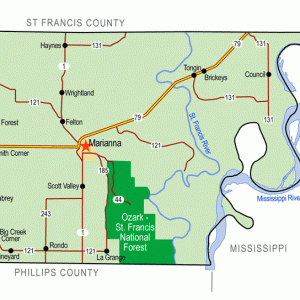 Lee County Map
Lee County Map 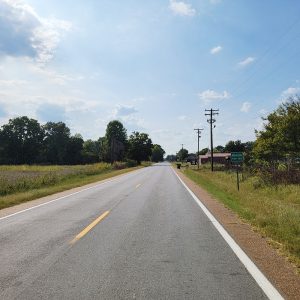 Entering Rondo
Entering Rondo 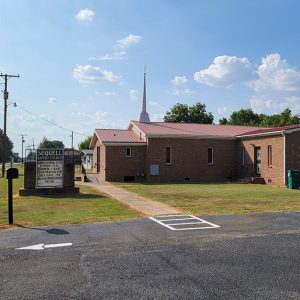 Rondo Church
Rondo Church 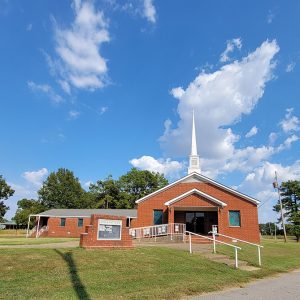 Rondo Church
Rondo Church 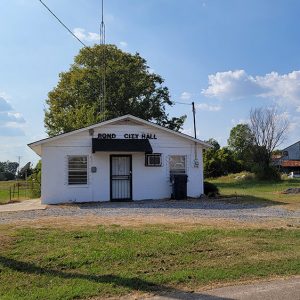 Rondo City Hall
Rondo City Hall 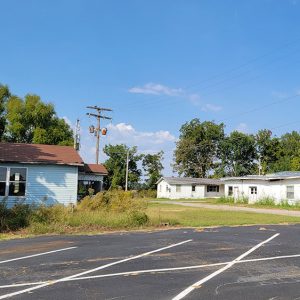 Rondo Street Scene
Rondo Street Scene 



While the Methodist church closed in the ’50s or ’60s, Rondo Baptist Church was still in existence in 2018 and holding services.